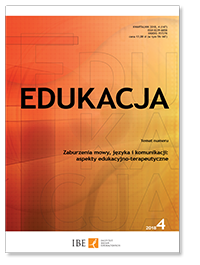Tożsamość społeczno-kulturowa a samoocena osób głuchych z implantem ślimakowym komunikujących się w języku polskim fonicznym – badanie wstępne
The sociocultural identity of deaf persons with a cochlear implant using Polish phonic language and their self-esteem – a preliminary study
Author(s): Joanna KoboskoSubject(s): Sociology of Education
Published by: Instytut Badań Edukacyjnych
Keywords: cochlear implant; deaf sociocultural identity; prelingual deafness; self-esteem
Summary/Abstract: The sociocultural identity of deaf people is usually described in terms of the four dimensions in which it may be experienced, indicated by, among other things, the identification of deaf persons with hearing persons (the dimension: hearing), neither deaf nor hearing persons (the dimension: marginal), d/Deaf people (the dimension: deafness), both d/Deaf and hearing persons (the dimension: bicultural). We ask the questions: what is the sociocultural identity of deaf persons with a cochlear implant (CI), and is there a relationship between the sociocultural identity of a deaf person and self-esteem and other variables, including sociodemographic ones. The study involved 28 persons, prelingually deaf, aged between 18 and 40 years, highly competent in the spoken Polish language. The Deaf Identity Development Scale (N. Glickman), the Rosenberg Self-Esteem Scale and the Information Questionnaire were used in the study. The results show that deaf persons with a CI experience themselves as “bicultural” and “hearing” to the greatest extent, and decreased self-esteem is related only to those experiencing a “marginal” identity, that is, they lack a feeling of identity and belonging to both d/Deaf and hearing people.
Journal: EDUKACJA
- Issue Year: 147/2018
- Issue No: 4
- Page Range: 125-135
- Page Count: 11
- Language: Polish

